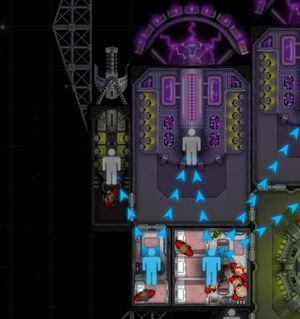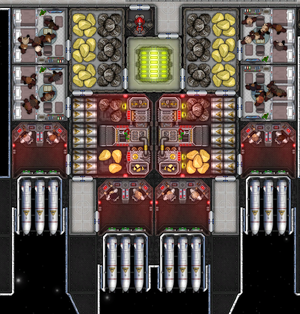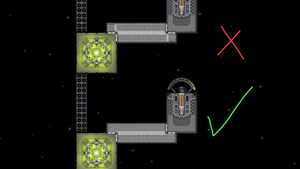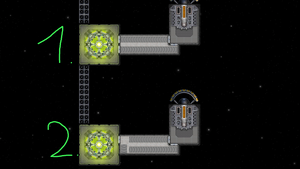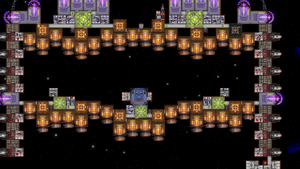Guides Hub/Microoptimization
Feel free to contribute and don't worry about perfection - other editors can make corrections if necessary. Just get creating!
This guide is meant to give on overview on different strategies that can increase your ships performance or cost efficiency in minor ways. The information provided is mainly useful for various pvp game modes as crew efficiency is not really considered but would often be more important factor in career.
Auto Ram
Your structure line for autoram should have a length of 2 building grids.
Explanation
When giving an autoram command you'll often want to rotate the target position. For that its easier the closer the target position is to the ship since your cursor will be close to it after selection.
So when setting up autoram you want a structure line that's long enough that the AI does not stall its thrust but as short as possible so that giving rotation commands is easier. Testing this reveals that a line length of 2 vanilla building grids works well (using Developer Mode to see what thrust is firing at what strength).
Crew Assignments
Fire Extinguishers
You should always assign your crew to Fire Extinguishers because they won't be able to switch tasks to it otherwise. (That's an issue if all of your crew is occupied while there is fire on your ship)
Pretask
Even small amounts of energy consumers may be used to pretask. The most widespread way to do this is the "EB trick" commonly utilized on ion rammers. It just uses the EB next to the shield for a tiny increase in sustainability.
Resource distribution
You should be mindful of which way your resources are placed and factories are orientated. Here is an example of a missile module.
Walkways
Make sure you know how crew works before reading this.
Walkway Orientation
Your walkways should face the same direction that the crew entering the tile is moving in:
The increase in movement speed is pretty small, but it's there.
Tile Entries
When making walkway supply lines to a tile you'd ideally always enter using one side of a corner and leave through the other (like above). This is because it minimizes the amount of non walkway tiles crew has to travel through.
But sometimes using the corner is not possible. In this case there are 2 possibilities:
1 has less crew congestion but is otherwise slower and 200 credits more expensive than 2. 1 and 2 are very similar in performance so it depends on the rest of the ship what setup should be preferred.
Weight distribution
There are parts where you have some flexibility on where to place them. Good examples are Operator crew quarters and thrusters which are attached to engine rooms. You can place those close to the center of mass for higher turning speed.

